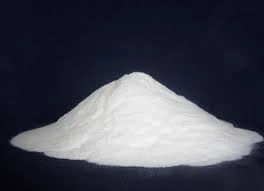Understanding Cellulose Methyl A Comprehensive Overview
Cellulose methyl, commonly known as methylcellulose, is a derivative of cellulose, the most abundant organic polymer on Earth. It has gained considerable attention in various industries due to its unique properties and versatility. This article aims to explore the characteristics, applications, and significance of cellulose methyl in different sectors.
What is Cellulose Methyl?
Cellulose methyl is produced by chemically treating cellulose with methyl chloride in the presence of an alkaline catalyst. This process modifies the cellulose structure, replacing some of the hydroxyl groups with methoxy groups. The resulting compound, methylcellulose, is a white, odorless powder that is soluble in cold water, forming a viscous gel. This solubility is one of its most appealing properties, leading to a wide range of applications.
Properties of Methylcellulose
Methylcellulose has several notable properties that enhance its practicality
1. Thickening Agent Due to its ability to dissolve in water and increase viscosity, methylcellulose is commonly used as a thickening agent in various products.
2. Stabilizer It can stabilize emulsions and foams, making it invaluable in food products and cosmetics.
3. Film-forming Ability Methylcellulose can form flexible films, which is particularly useful in coatings and protective layers.
4. Thermal Gelation A fascinating characteristic of methylcellulose is its thermal gelation; it solidifies when heated and reverts to a gel when cooled, providing unique properties for cooking and food preparation.
5. Biocompatibility Methylcellulose is generally recognized as safe (GRAS) by the FDA, making it suitable for use in food, pharmaceuticals, and personal care products.
cellulose methyl

Applications of Cellulose Methyl
Given its diverse properties, methylcellulose finds applications across various industries
1. Food Industry Methylcellulose is widely used in processed foods as a thickener, emulsifier, and stabilizer. It helps improve texture, retain moisture, and enhance shelf life. Products such as ice cream, sauces, and gluten-free baked goods often contain methylcellulose.
2. Pharmaceuticals In the pharmaceutical field, methylcellulose serves as a binder and coating agent in tablets and capsules. It is also used in suspensions for controlled drug release and as a laxative due to its ability to absorb water and form a gel.
3. Cosmetics and Personal Care Methylcellulose is commonly found in lotions, creams, shampoos, and other personal care products. It acts as a thickener, emulsifier, and stabilizer, enhancing the stability and application of these formulations.
4. Construction The construction industry utilizes methylcellulose in various applications such as mortar additives and adhesive formulations. Its water-retention properties help improve the workability of cement mixes and enhance adhesion.
5. Biotechnology In biotechnology, methylcellulose can be used as a supportive matrix for cell culture, providing a scaffold that mimics the extracellular matrix, promoting cell attachment and proliferation.
Environmental Considerations
As a derivative of cellulose, methylcellulose is biodegradable and considered environmentally friendly. Its production from renewable resources, coupled with its non-toxic nature, aligns with growing eco-conscious trends in many industries. This aspect resonates well with consumers increasingly concerned about sustainability and ecological impact.
Conclusion
Methylcellulose exemplifies the intersection of chemistry and practicality, serving as a multifunctional agent in food, pharmaceuticals, cosmetics, construction, and biotechnology. Its unique properties, such as viscosity, emulsification, and gelation, make it indispensable in many formulations. As industries continue to evolve, the demand for cellulose methyl is likely to grow, driven by innovation and the pursuit of sustainable solutions. The future prospects for methylcellulose look promising, as research progresses to explore new applications and enhance its existing uses, making it a vital component in a myriad of products we use daily.






